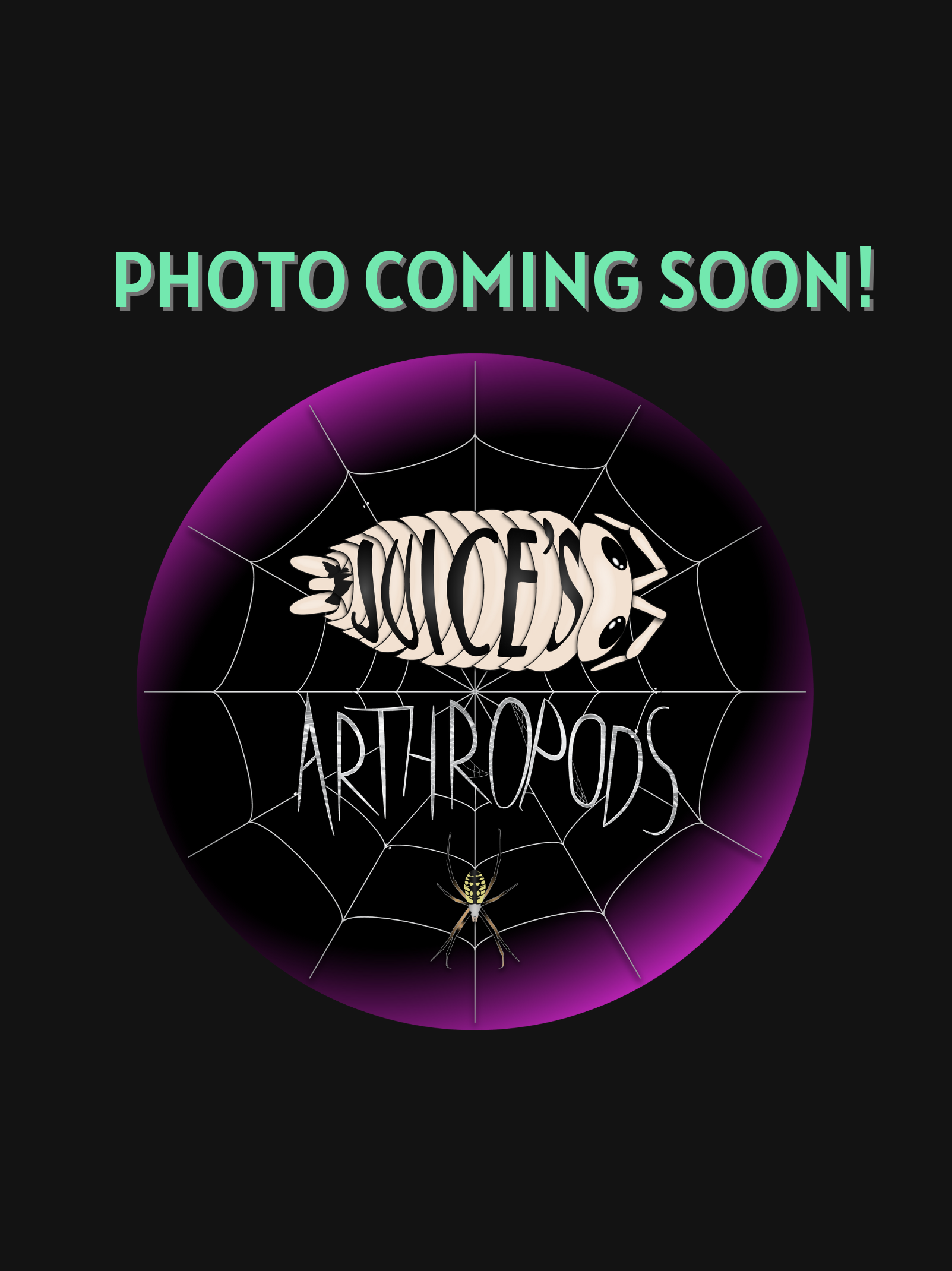Psalmopoeus ecclesiasticus
Psalmopoeus ecclesiasticus, or "Ecuador Olive Tree Spider", is a rare and striking arboreal tarantula native to Ecuador, recognized for its muted olive-green coloration, subtle patterning, and elegant, leggy build. A member of the Psalmopoeus genus, this species is part of the New World arboreal group and is admired for its combination of speed, beauty, and bold personality.
Though not as commonly kept as its cousin Psalmopoeus irminia (Venezuelan Suntiger), the Ecuador Olive Tree Spider is quickly gaining popularity for its unique color palette, cryptic appearance, and fast growth. It is a heavy webber, often constructing elaborate silken retreats in cork tubes, vertical bark, or canopy-style setups.
Psalmopoeus ecclesiasticus, or "Ecuador Olive Tree Spider", is a rare and striking arboreal tarantula native to Ecuador, recognized for its muted olive-green coloration, subtle patterning, and elegant, leggy build. A member of the Psalmopoeus genus, this species is part of the New World arboreal group and is admired for its combination of speed, beauty, and bold personality.
Though not as commonly kept as its cousin Psalmopoeus irminia (Venezuelan Suntiger), the Ecuador Olive Tree Spider is quickly gaining popularity for its unique color palette, cryptic appearance, and fast growth. It is a heavy webber, often constructing elaborate silken retreats in cork tubes, vertical bark, or canopy-style setups.


Psalmopoeus ecclesiasticus, or "Ecuador Olive Tree Spider", is a rare and striking arboreal tarantula native to Ecuador, recognized for its muted olive-green coloration, subtle patterning, and elegant, leggy build. A member of the Psalmopoeus genus, this species is part of the New World arboreal group and is admired for its combination of speed, beauty, and bold personality.
Though not as commonly kept as its cousin Psalmopoeus irminia (Venezuelan Suntiger), the Ecuador Olive Tree Spider is quickly gaining popularity for its unique color palette, cryptic appearance, and fast growth. It is a heavy webber, often constructing elaborate silken retreats in cork tubes, vertical bark, or canopy-style setups.
What's the ideal diet for an Ecuador Olive Tree Spider?
All Tarantulas can eat a variety of feeders. Stick to crickets, dubia roaches, silkworms, horned worms occasionally, and a superworm or mealworm as the occasional treat!
How should I keep an Ecuador Olive Tree Spider?
For this particular creature, you can start with the small Arboreal Bliss enclosure, and when they get to be about ⅓ the size, you will want to upgrade to the medium or large Arboreal Bliss enclosure. Feed them as slings once a week, twice if their opisthosoma (abdomen) looks small, but if the opisthosoma is wider than their prosoma (pneumothorax), then wait a couple of days to feed. For juveniles or adults, stick to feeding once a week, nothing larger than their opisthosoma. Make sure to keep a full water dish at all times; wider and deeper is preferred.
How long could an Ecuador Olive Tree Spider live?
Females are believed to live upwards of 12+ years, and males not exceeding around 4 years of age. All estimates are based on multiple sources.


















